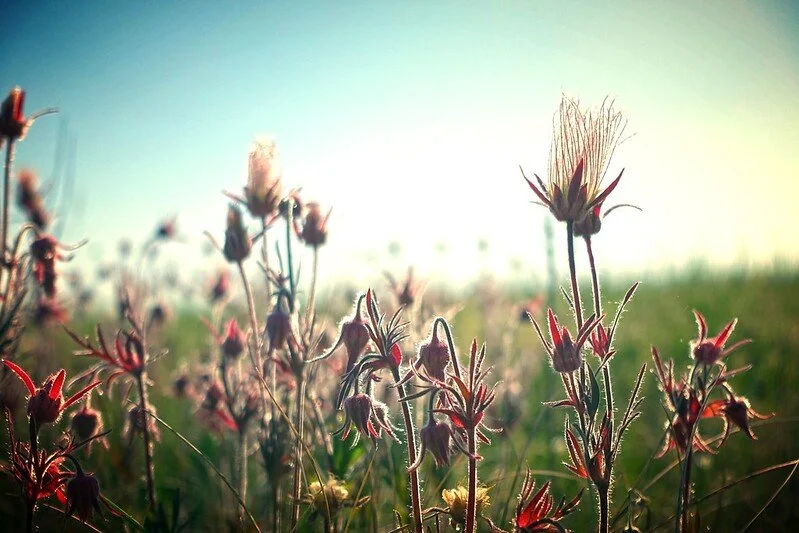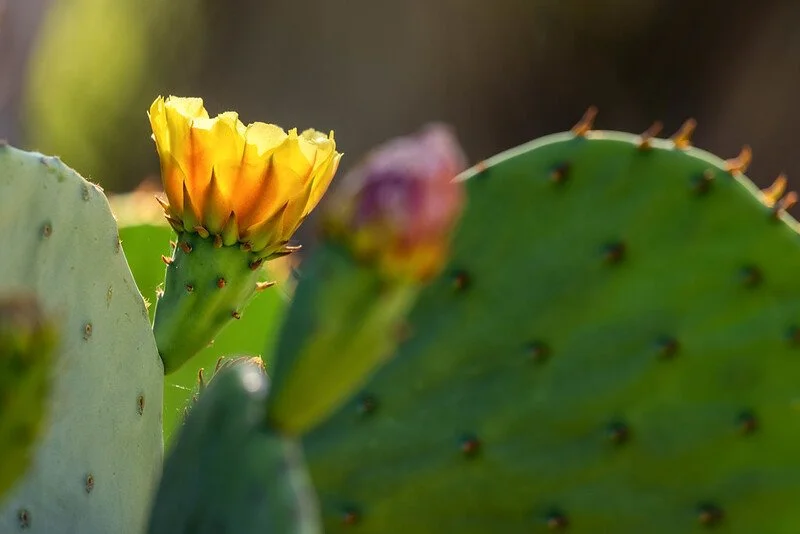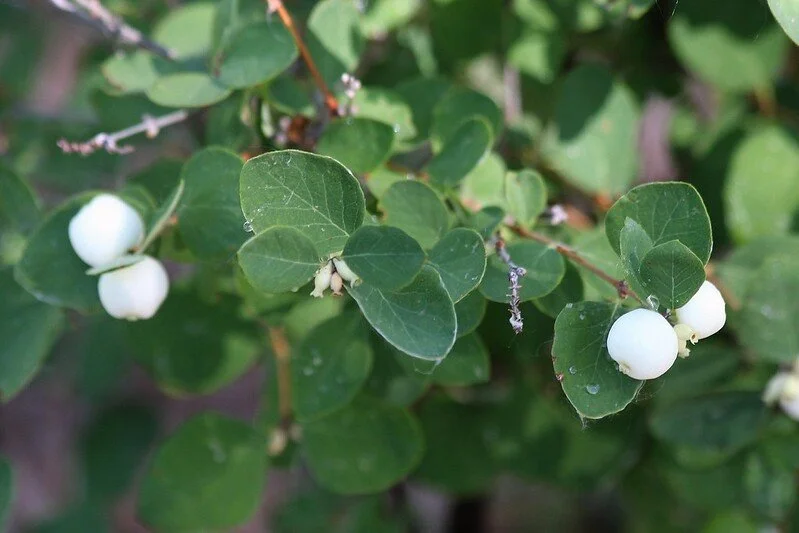10 Native Plants for a Fire-Defensible Home
Native plants can be part of a fire defense strategy at your home. Photo: Edna Winti / flickr, used under CC by 2.0
Anxiety is high in the aftermath of the Marshall Fire. Homes and neighborhoods were lost in the span of minutes as wildfire tore through the communities of Superior and Louisville, fanned by heavy winds and by dry prairie grasses. We grieve the loss of our neighbors. We must figure out ways to protect the homes that remain.
Elsewhere in the fire-prone West, municipalities have developed lists of plants that resist fire and create a zone of protection around a home called a fire-defensible space. This list contains plants that score the BLM’s highest rating for fire resistance and are suitable for planting within 30 feet of the home. They are also native plants, which nurture wildlife in the form of food and habitat.
If your home escaped the Marshall Fire, consider planting these species around your home to create a fire-defensible space and support native wildlife.
How to use this information
All vegetation will eventually burn, but these plants contain enough internal moisture to resist ignition. The higher the score, the safer the plant. Those that score a 10 are suitable 10 feet from the house; 9s can be planted 20 feet from the house; and 8s 30 feet. The safest material for within 10 feet of your home is an inflammable stone mulch. Explanations of the BLM’s fire-resistance ratings here. Boulder County native plant info here.
10 Native Plants for a Fire-Defensible Home
Great Plains Yucca. Photo: Michael Levine-Clark / flickr, used under CC BY-NC-ND 2.0
1. Prickly Pear Cactus (Opuntia spp.)
Fire Resistance: 10
Prickly pear cactus scores the BLM’s highest rating for fire-resistance. It’s a xeric (low water) cactus that needs full sun and grows to 5 inches tall and 18 inches wide. It blooms cream/creamsicle in the summer, attracting native bees, and produces a red fruit.
Andrey Zharkikh / flickr, used under CC by 2.0
2. Yellow Stonecrop (Sedum lanceolatum)
Fire Resistance: 10
This red-tinted groundcover produces fleshy leaves and stems that support yellow star-shaped flowers in early summer. It does best in low water, rock gardens. Truly a hearty wildflower.
Blue grama grass Photo: Lostinfog / flickr, used under CC BY-SA 2.0
3. Buffalo Grass & Blue Grama Grass
Fire resistance: 9
Buffalo and blue grama grass are the only turf species on this list, they’re both warm-season grasses and they’re often planted together. Buffalo grass grows up to 8 inches tall (meaning, it requires infrequent mowing), requires little water once established, and it spreads by runners. Blue grama grass is only slightly taller at 18 inches, and it blooms that characteristic prairie flag. Its seeds are eaten by birds. Local nurseries carry a mix of the two.
Snowberry. Photo: J. N. Stuart / flickr, used under CC BY-NC-ND 2.0
4. Snowberry (Symphoricarpos occidentalis)
Fire resistance: 8
Bees and butterflies are crazy for the pink flowers of this shrub during the summer bloom. The snowberry grows to 4-feet-by-4-feet and provides four season interest in the berries that give this plant its name. Birds will eat the berries, but not as a prefered food source. Water needs are low to moderate.
Pussytoes. Photo: Andrey Zharkikh / flickr, used under CC by 2.0
5. Pussytoes (Antennaria parvifolia)
Fire resistance: 8
This venerable ground cover has a frosted, gray tint and pushes up pink flowers from spring to summer. It stays low to the ground at 4 inches, but will spread out to 6 inches. It can tolerate part shade and it supports native bees and butterflies.
Prairie smoke avens. Photo: Edna Winti / flickr, used under CC by 2.0
6. Prairie Smoke Avens (Geum triflorum)
Fire resistance: 8
One of the earliest natives to bloom, the prairie smoke avens produces a pink, drooping flower on a 12-inch stem, followed by a globe-shaped filament when it goes to seed. Its spring and summer-blooming flowers bring the butterflies but deer won’t touch the stuff.
Great Plains Yucca. Photo: Bettina Arrigoni / flickr, used under CC by 2.0
7. Great Plains Yucca (Yucca glauca)
Fire resistance: 8
Everyone knows the yucca. It’s sword-like leaves poke like blades and it raises a cream-colored multiflowered stalk in the summer of some years. The fruits are edible to people, but it’s a better host plant for the pronuba moth. Grows to 2-by-2-feet without asking for much beyond full sun. Another hardy native plant.
8. Skunkbush Sumac (Rhus trilobata)
Fire resistance: 8
This low-growing shrub holds its own against fire, but in the right conditions it can spread out and form stands – it’s higher maintenance than some of the super-xerics on this list. But for those willing, it offers four-season beauty with yellow flowers in spring that mature to seed clusters that look like grapes in summer, a fall color show, and an interesting branching habitat come winter. Birds agree. Grows to 4-by-3-feet.
White -lined Sphyx moth on a Rocky Mountain penstemon. Photo: Celestyn Brozek / flickr, used under CC BY-NC 2.0
9. Rocky Mountain Penstemon (Penstemon strictus)
Fire resistance: 8
It’s hard to do better than the penstemon family for perennials that offer fire-resistance, ease-of-care, and wildlife value. This one raises stalks packed with purple bell-shaped flowers in summer and is a favorite of bees, butterflies, and hummingbirds. It tolerates part shade, low water, and grows to 30-by-24 inches.
Pineleaf penstemon. Photo: Andrey Zharkikh / flickr, used under CC by 2.0
10. Pineleaf Penstemon (Penstemon pinifolius)
Fire resistance: 8
Pineleaf penstemon is a smaller, finer-textured version of its cousin, the Rocky Mountain penstemon, and requires a similar care regime. It produces crowded stalks of small red or yellow flowers for weeks in the summer and grows 12-by-18 inches. Hummingbirds, bees, and butterflies all like it.
Learn more about fire-wise gardening
This year, we’re offering two free workshops on using hardy, native plants to create fire-defensible pollinator gardens at your home.
April 8, 2025, 5:30-7PM, Louisville Rec Center. RSVP here
April 22, 2023, 6-730PM, Lafayette Public Library. RSVP here
The workshop is geared toward DIY gardeners who want to take on a season-size project to increase the fire-defensibility of their landscape. All participants will leave with a fire-wise planting template and everyone who attends is eligible for a random drawing for five, 50-plant kits that follow the fire-wise template.










